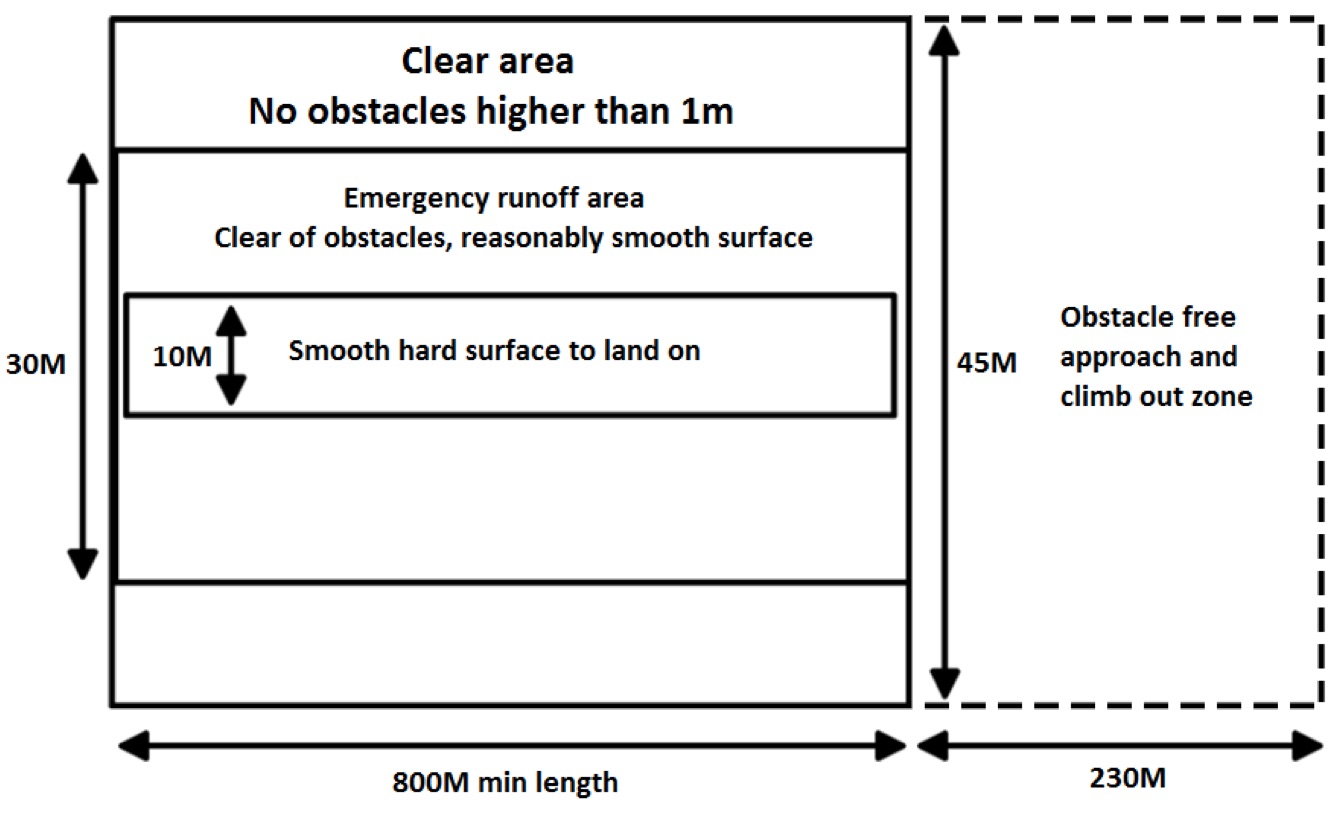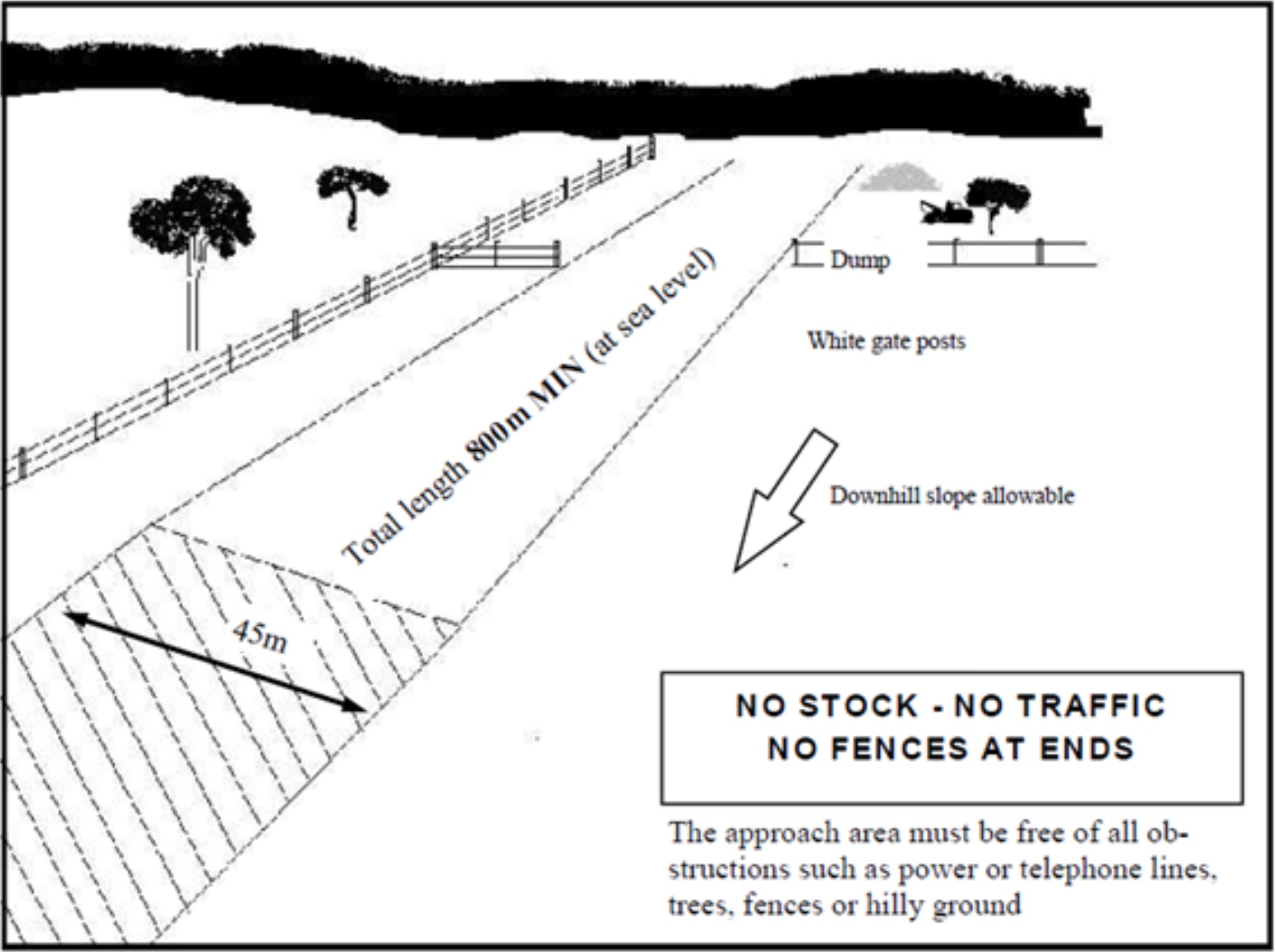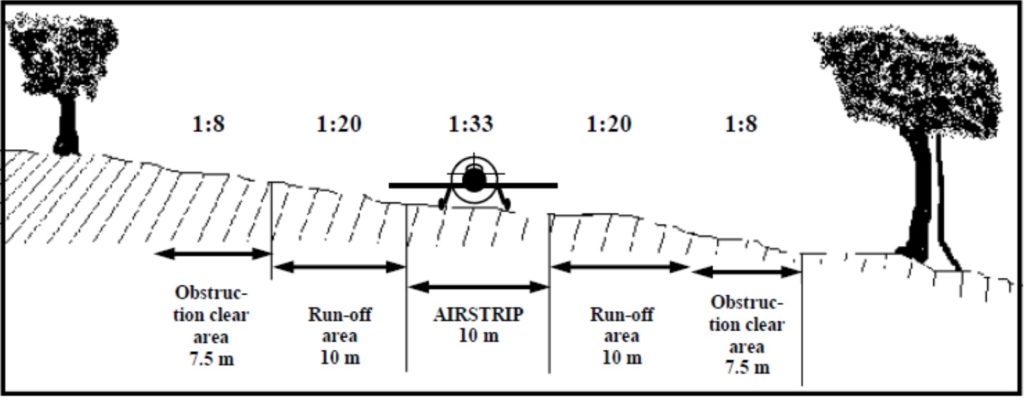Airstrips
Building an agricultural airstrip
Building an agricultural airstrip on your property can be one of the most cost effective ways to reduce your aerial applications costs and will soon pay for itself in reduced ferry charges. Always consult us for advice on selecting an appropriate site before building an airstrip.
Operational Requirements
Aircraft basically operate on a cost per hour basis, so to reduce costs the airstrip should be in reasonable proximity to the treatment area – less than 10km from takeoff point to the end of the treatment area for spraying, and less than 4km from takeoff point to the end of the treatment area for spreading. Outside of this, additional costs may apply.
The strip must be accessible to ground vehicles. It should not be necessary for these vehicles to travel on the strip, access to the loading area should be by a separate route. The access road should be usable in wet weather.
There must be provision for a sufficient sized loading and turn around area for our trucks and aircraft. There should be sufficient room to allow the aircraft to commence the take-off run once loaded without having to turn to line up.
The loading area should be located at the end of the strip from which takeoff would normally be commenced. It should be to one side of the strip and should be as level as possible to minimise risk and to facilitate accurate measurement of the load.
For spreading jobs, if possible, position the airstrip towards the treatment area and on the highest site available to avoid climbs
The site for an airstrip should be selected carefully having regard to the farm location and prevailing wind. The runway direction should be aligned as closely as possible with the prevailing wind in the area. Even a small amount of tailwind can significantly increase the required take-off distance for a loaded aircraft, or alternatively, cause the pilot to have to significantly reduce the load to be carried.
Water must be available for spraying jobs, either carted in with a water trailer or with onsite tank and water supply, etc. One aircraft can use up to 6000 litres of water per hour, so we must have a good supply of water.
Consider talking with your neighbours about building and sharing an airstrip as both of you can benefit from the reduced rates.
The longer the airstrip the better, as it increases our safety margin. For spraying, ideally the airstrip should be 1000m or at least 800m long if there is a favourable slope. The strip should be 45m wide with a 230m obstacle free (trees, powerlines, houses, hills, fences) approach and climb out path with a gradient of at least 1:20 measured in a straight line from ground level at the end of the strip. From this point it must be possible to maintain a minimum obstacle clearance of 50ft. A gently curved flight path may be used in achieving this clearance but please consult us.

Typical One-Way Air Strip

Maximum Allowable Cross Grade


Heavy Fertiliser Spreading
Superphosphate Spreading Airstrips
For superphosphate spreading airstrips, we need at least a 600m strip at sea level, and an additional 50m for every 1000ft, or part thereof, increase in elevation. The airstrip should be in a high area to avoid climbing charges, and in close proximity to the treatment area (ideally within 4km, measured from the take off point to the far end of the treatment area).
Airstrip surface, slope, width, approach and climb out path/gradient requirements, and operational considerations such as accessibility, airstrip direction, loading pad requirements etc, are the same as listed in the above information.
Superphosphate spreading airstrips lengths may sometimes be reduced if the airstrip has a slope. The following table is a guide for your information. Always contact us for advice on selecting an airstrip site.

